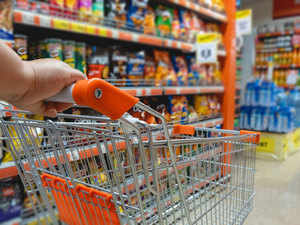 iStock
iStockSales were also boosted by a 28% increase in the number of kirana outlets that reopened this month, a contrast from the last two months, when the local grocer count fell sharply, according to the latest study by Bizom, which tracks sales of 7.5 million retail stores across the country.
“The market is quite upbeat and we expect the growth momentum to continue till at least Diwali, as the economy reopens gradually. Also, the monsoon season has been historically good in terms of demand across categories,” said Krishnarao Buddha, senior category head at Parle Products. The southwest monsoon runs from June to September. Companies said consumption of daily groceries and essentials in villages is now returning to pre-lockdown levels.
This had tapered off significantly. For instance, Dabur said that with several states unlocking and local markets opening up, consumer demand is showing a sequential uptick, especially for chyawanprash, honey and immunity-building ayurvedic products.
“We are seeing a tailwind for our healthcare portfolio, particularly in rural India,” said Adarsh Sharma, executive director, sales, Dabur India. “The drop in Covid-19 cases has not only boosted consumer sentiment, but also helped the supply chain recover from the Covid-induced disruptions.”

While localised lockdowns started in April in a few markets, as the second wave took hold, more than two dozen states had restrictions and night curfews in place last month. That led to the market falling by a third, when about a quarter of all kirana outlets were shut, despite being allowed to operate, albeit with restricted timings.
“All categories have grown in high double digits, indicating there will be a stronger revival on the cards as the month progresses and even more unlock measures get in place,” said Akshay D’Souza, chief marketing officer at Mobisy Technologies, which owns Bizom. “In fact, home care and packaged foods see higher growth even when compared with March, when there were no restrictions.”
OUT-OF-HOME CONSUMPTION
While the second wave benefited hygiene and in-home consumption, it hurt discretionary demand and took a further toll on the badly hit HoReCa (hotels, restaurants, catering) channel. Companies said there is a revival in out-of-home consumption too.
“HoReCa is recovering in most markets, except southern states,” said Angshu Mallick, chief executive of Adani Wilmar, which sells the Fortune brand.
Read More News on
Download The Economic Times News App to get Daily Market Updates & Live Business News.
Read More News on
Download The Economic Times News App to get Daily Market Updates & Live Business News.









 Get Unlimited Access to The Economic Times
Get Unlimited Access to The Economic Times
